The secret location that became Dora The Explorer’s jungle home
The lush rainforest along the Coomera River on the nothern Gold Coast suited the script for Dora the Explorer so well, it was rewritten to fit a riverhouse for her.
New Movies
Don't miss out on the headlines from New Movies. Followed categories will be added to My News.
THERE IS a picturesque bend in the Coomera River where salt water meets fresh and where turtles scuttle as silently as possible from prowling bull sharks.
As black cockatoos “kee-ow” noisily, a cackle of cormorants, sea eagles, brahminy kites and pelicans jostle for prime fishing spots.
When Dora and the Lost City of Gold director James Bobin and production designer Dan Hennah saw the spot, known locally as The Weir, they were captivated. So much so, the script for the film was reworked to ensure their heroine Dora lived in a river jungle house. It was something that Oscar-winner Hennah (The Hobbit trilogy) had wished for in his original concept art.
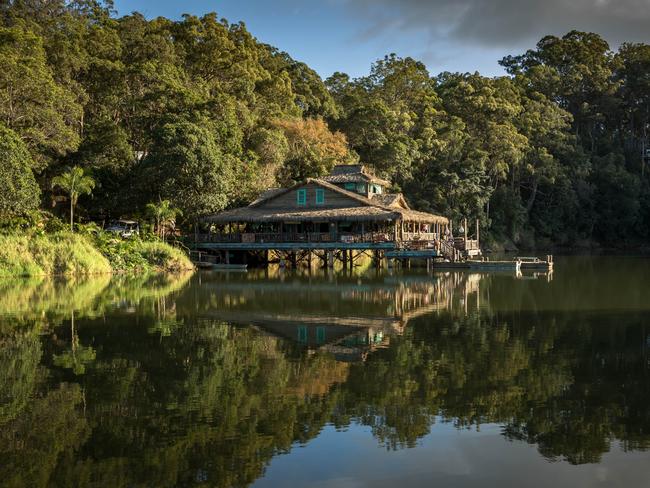
“I thought it would be wonderful from a kid’s point of view for Dora to live on water and James loved it straight away … it is fantastical and I see Dora as a fantasy,” Hennah told U on Sunday last year on the set of the film that is based on the popular children’s cartoon series (2000-2019).
“We were lucky to find an environment where the water didn’t rise and drop too fast and there was almost enough jungle to shoot at 360 degrees.”
The spectacular backdrop, also popular among Gold Coast locals for fishing, birdwatching, kayaking and waterskiing, represents the Amazon jungle in Dora and the Lost City of Gold.
Bobin says Queensland was a natural choice to fill in for the lush Amazon River basin with the intense rainforest near Tamborine Mountain ideal for jungle scenes.
“The forest here didn’t require that much dressing so Queensland has been fantastic for us,” he says. “Fifteen miles inland is dense rainforest which looks exactly like the rainforest in the Amazon because a millennia ago, the gigantic continent (Gondwana) had a lot of forest on it, and then it broke up … so the forest here looks incredibly similar to the forest in South America.
“And isn’t Dora’s house really good!”
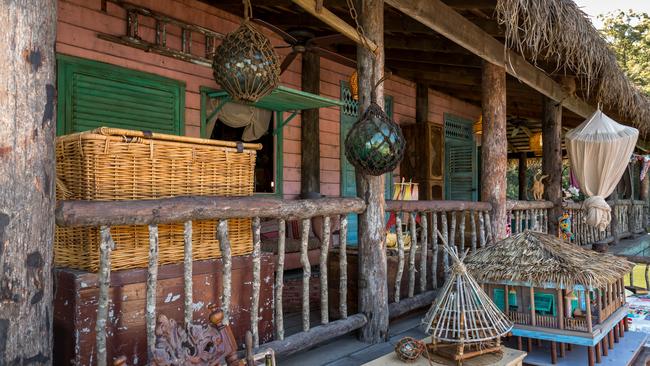
Framed by river-edge thicket, Dora’s childhood jungle home has been built jutting out over the water. The house plays a central role in the movie’s opening sequences as we are introduced to Dora and her family in the coming-of-age film.
Hennah made many Google Earth searches of Amazon River jungle houses but he was also influenced by the Queenslander-style, particularly with the verandas. “The magical part is that when the cast steps into the house, the whole place comes to life,” he says, looking around the river location.
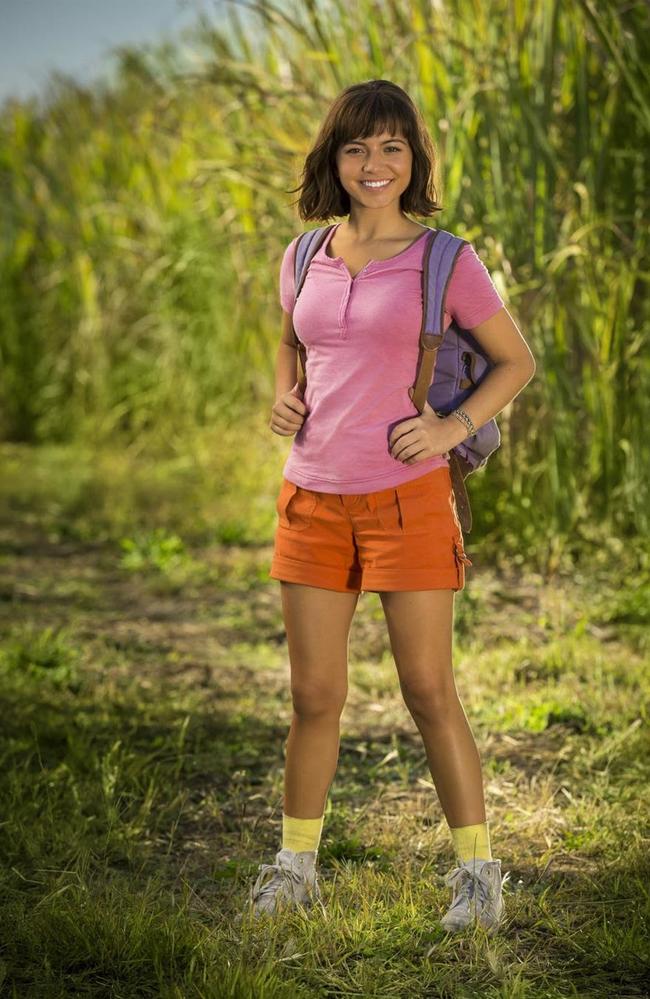
We first see Dora living in the house as a six-year-old, the age of the cartoon character, who became an icon for the world’s 55 million-strong Latino population. Then we see Dora as a 16-year-old, played by Peruvian-American Isabela Moner (Instant Family and Transformers: The Last Knight).
“Dora’s mother (played by Eva Longoria) is a zoologist and her father (Ant-man’s Michael Pena) is an archaeologist, and they are raising their child in the middle of nowhere, and they go on journeys to find artefacts and they bring back elements of where they have been back to their house,” says Hennah, who enjoyed decorating the house full of props, many of which were sourced from Gold Coast antique and second-hand shops.
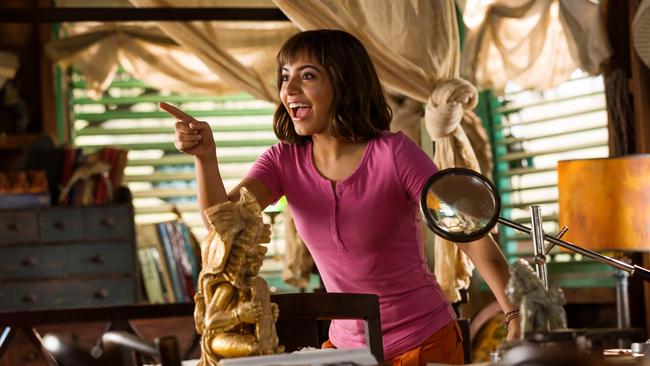
Moner, 18, says she was attracted to playing Dora after reading the script, especially the comedy beats, and how the screenwriters had created a three-dimensional character.
“The scriptwriters did a great job developing the character, so there is a whole history from when Dora was five, so they have given me a lot to work with,” she says during a break in filming. “Even though she is 16, she is the same Dora that people love.
“The movie is about growing up and not conforming to what people tell you to. Dora is made fun of throughout the script because she is so out there and people can’t conceive how someone can be so positive and upbeat, and happy and loving all the time. It’s a great message.”
Moner was especially excited to have Longoria and Pena play her parents.
“I’m just happy that they (producers) think that I look related to Eva, who is gorgeous; and Michael Pena because I’ve watched his whole movies growing up,” she says. “I admire Eva as an actor and as a human being.”
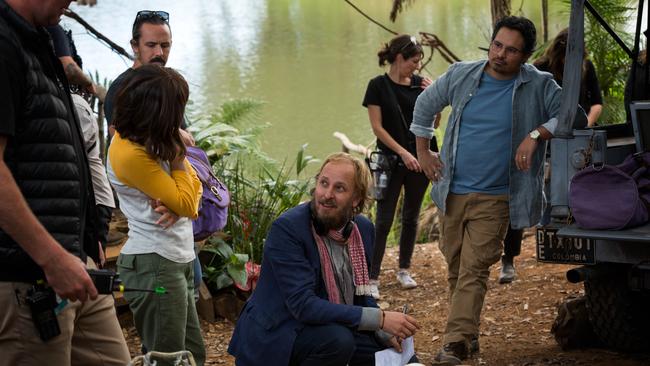
The first week Moner arrived in Queensland for filming, she and her family visited the Great Barrier Reef.
“We went scuba diving … and we took a helicopter ride over the Reef,” she says, while adding she also had a Bindi Irwin-led tour of Australia Zoo, including the site’s welfare hospital facility. Channelling her Dora persona, Moner admits she was fascinated by the X-raying of an injured turtle at the facility, as well as seeing the zoo’s many koalas.
Bobin also enjoyed the experience of filming here. “I love Queensland. I had friends make films here, my great friend Taika (Waititi) made Thor here so he was full of praise for the crew,” he says.
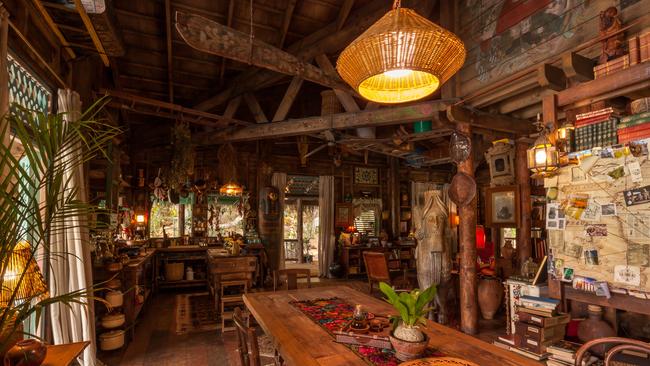
“I actually want to come back. I’m trying to find another film I can do that with.”
It took the construction crew 12 weeks to position Dora’s house, having to drill through solid rock to drive down pylons for support.
The house was built in pieces which were craned in individually to form a giant house puzzle, meaning once the week of filming was over, it took only a few days to pull it apart.
“We are going to save the house (pieces) for reshoots, (but once we’re gone) you won’t have known it was there,” Hennah says.
Dora and the Lost City of Gold opens Thursday
Originally published as The secret location that became Dora The Explorer’s jungle home
